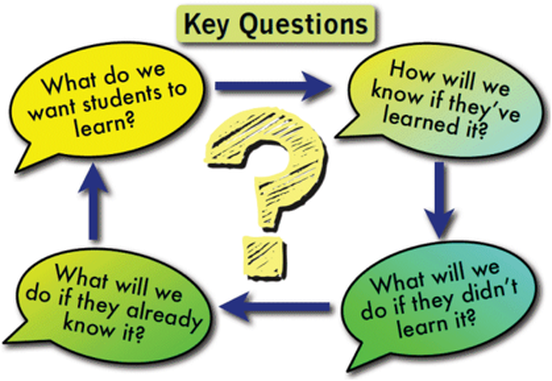Approaches to Professional Learning #1: Professional Learning Community
The “Professional Learning Community” approach to professional learning has become well known – so much so that the term is now used to describe almost anything teachers do in teams. The term originally gained popularity when it was adopted by Richard DuFour and Robert Eaker (1998) to describe an approach to professional learning where educators work in flexible and interconnected teams that continually:

- Clarify the student learning objectives.
- Develop and use assessment tasks that provide evidence of student achievement of the learning objectives.
- Analyze the evidence provided by students through the assessment tasks, using it to plan for intervention, consolidation and enrichment as needed.
What I like most about this approach:
- It is directed intentionally towards improving student learning. It is not about teachers learning to implement a program, but finding out what and how our students are (or are not) learning and adjusting teaching practice accordingly.
- It is informed by local evidence. There is a place for using broader research evidence within this approach, but the primary driver of educational decision making is evidence collected directly from your students regarding their learning.
- It involves teachers working interdependently. All students benefit from the strengths of all teachers when those teachers collaborate with each other in meaningful ways. Teachers benefit from mutual support and opportunity to share leadership and expertise, and are modelling in the staffroom the kind of collaboration they wish to see students exercise in the classroom.
- Professional learning is embedded in daily practice. There is a place within this approach for teachers attending workshops or courses, or the input of external “experts”, where the evidence suggests this would be beneficial. However, professional learning is mostly integrated into the regular routine of lesson/unit planning, assessment and staff meetings. This makes the approach potentially more cost and time efficient, and more effective in driving change in classroom practice that improves student learning.
The challenges I see with this approach:

- The logistics could get complicated. Scheduling time for flexible and interconnected teams to meet will not be simple. Likewise, for the teams to schedule coordinated times for intervention and enrichment will require some innovative planning.
- It requires significant expertise in data management and analysis. Not all teachers have, or feel inclined to develop, these skills. This could be a significant hurdle to overcome.
- It will likely require a significant cultural change, breaking down the norms of independence and isolation that exist in most schools. Developing a foundation of trust and mutual appreciation of one another amongst the staff team (if it does not already exist) will be essential.
To explore this approach more…
- The “All Things PLC” website.
- Book: Revisiting Professional Learning Communities at Work 2nd edition (DuFour et. al., 2021)
- This comprehensive approach to PLC implementation from the education department in Victoria, Australia, including tools.
Comments